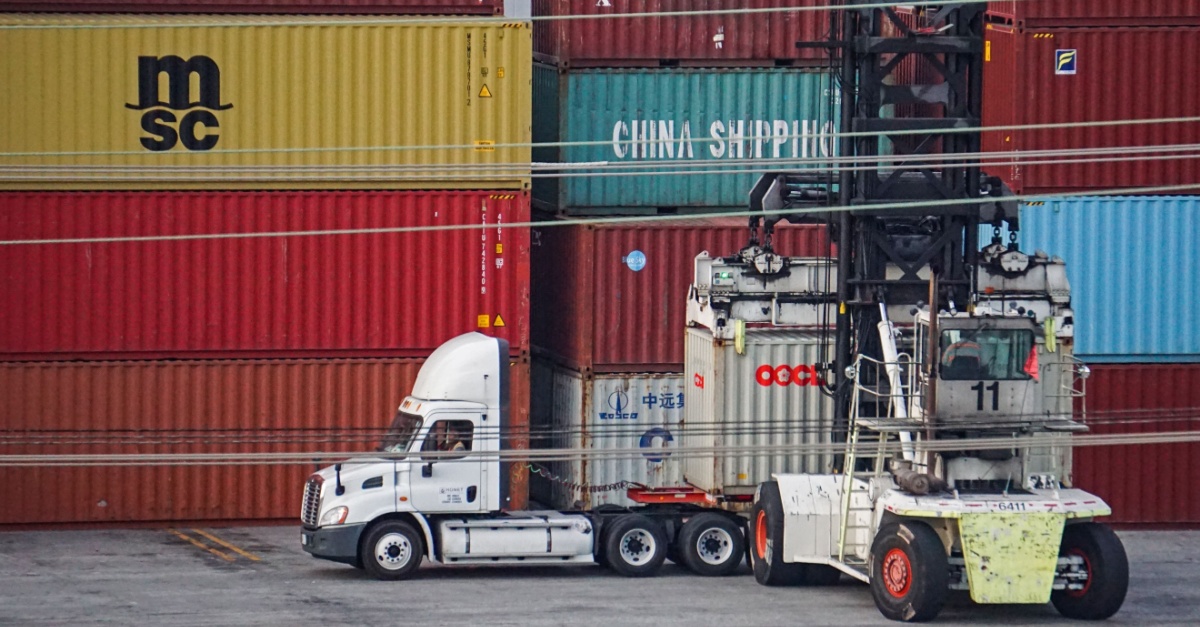

These days, companies simply cannot afford an inefficient supply chain. The impact of conflicts on fuel prices and freight rates, increased regulatory pressure, and fluctuating freight capacity have combined to force shippers to rethink traditional transportation models.
Intermodal freight shipping — connecting ocean, rail, and trucking into one seamless movement — offers a powerful alternative that delivers efficiency and sustainability. It’s especially valuable in managing seasonal demand spikes, long-haul inefficiencies, and cross-border coordination.
In fact, demand for intermodal shipping is holding strong even in a complex freight environment. For week 24 of 2025, as of mid-June, five of the 10 tracked commodity groups saw an increase in intermodal freight volume, according to the Association of American Railroads (AAR), as reported in Railway Supply.
While total volume dipped a modest 1.5% for the week, it remained up 4.2% year to date versus 2024, a clear signal that shippers are continuing to turn to intermodal strategies for reliable performance.
VCPB Transportation has long recognized the value of intermodal logistics, offering shippers a smarter, more sustainable path forward. With deep industry expertise, coast-to-coast rail and drayage networks, and cutting-edge supply chain technology, VCPB helps businesses simplify their operations without sacrificing speed, visibility, or flexibility. This includes the strategic use of transloading services between modes — the often-overlooked handshake that makes “port-to-pavement” efficiency possible.
Whether it’s an international container arriving in Los Angeles, Newark, or Houston, VCPB ensures that freight is promptly off-loaded, matched to domestic rail-ready containers through transloading, and moved inland using the most efficient rail corridors. From there, the shipment is transferred to a truck for final-mile delivery. This port-to-pavement model reduces handling, accelerates throughput, and minimizes risk.
By reducing unnecessary touchpoints and container transfers, intermodal shipping enables seamless long-distance transport. Rail is used for the long-haul portion — offering fuel efficiency and schedule predictability — while trucks provide essential first- and last-mile flexibility. This hybrid model is especially effective at avoiding highway congestion, reducing dwell times at facilities, and creating more predictable delivery windows.
VCPB’s container-routing strategies are designed to optimize transit times and avoid choke points. VCPB’s operational model includes coordination with Class I railroads, real-time container tracking, and fully integrated drayage solutions. These are all essential components for minimizing delays and maximizing network efficiency.
Managing the handoff between ocean, rail, and truck modes is where many logistics providers struggle, but it’s VCPB’s specialty. With deep partnerships at every node and boots-on-the-ground knowledge of port operations, VCPB ensures each transition is seamless. The result? A streamlined supply chain that’s faster, more reliable, and better aligned with shippers’ goals.
Intermodal shipping is both efficient and economical. Rail transportation is significantly more fuel-efficient than over-the-road (OTR) trucking on long hauls. According to the AAR, U.S. freight railroads can move 1 ton of freight more than 470 miles on a single gallon of fuel. That’s a direct cost saving, and a key reason why shippers are incorporating intermodal into their transportation mix.
Fewer miles on the road also mean lower labor and maintenance costs. Intermodal reduces the impact of driver shortages, hours-of-service (HOS) restrictions, and high fuel surcharges, persistent challenges in traditional trucking.
Environmentally, intermodal freight supports shippers’ ESG commitments. As Global Trade reports, intermodal logistics significantly cuts carbon emissions by relying more on rail and less on high-emission trucking. Fewer trucks on the highway also means less congestion and reduced wear on infrastructure.
VCPB Transportation takes this even further. The company uses transloading to shift freight from international containers arriving at ports into domestic intermodal containers that maximize payload and reduce per-mile costs. The result is fewer trips, a smaller carbon footprint, and lower costs — a win-win-win.
From port arrival to final-mile delivery, VCPB uses real-time data to power its operations. Visibility and predictive analytics are now a necessity, which is why VCPB invests in advanced technologies, including:
These tools allow VCPB and its customers to track shipments across all legs of the journey, from container pickup at the port, to rail hub transfer, to final delivery. As noted by In-Freight’s industry guide, the digitalization of intermodal freight eliminates inefficiencies like empty miles, delays from manual paperwork, and missed updates.
VCPB’s platform also supports exception management and KPI benchmarking, allowing customers to optimize freight spend while maintaining service levels. From port gates to distribution centers, VCPB empowers shippers with clarity and control.
The time has come to rethink long-haul freight. OTR remains an important tool, but it no longer needs to carry the entire load. Intermodal shipping is the smarter, more resilient alternative, combining speed, cost-efficiency, and environmental stewardship.
By embracing the strengths of each mode and bridging them with transloading, real-time technology, and mode-specific expertise, VCPB delivers a complete “port-to-pavement” shipping solution.
Whether you’re moving goods across the country or across borders, VCPB ensures your freight moves seamlessly, sustainably, and with total visibility. From optimized container routing and integrated technology to hands-on terminal coordination and final-mile execution, VCPB is your trusted intermodal partner.
Ready to streamline your supply chain by augmenting it with intermodal? Start shipping with VCPB today.